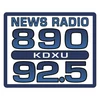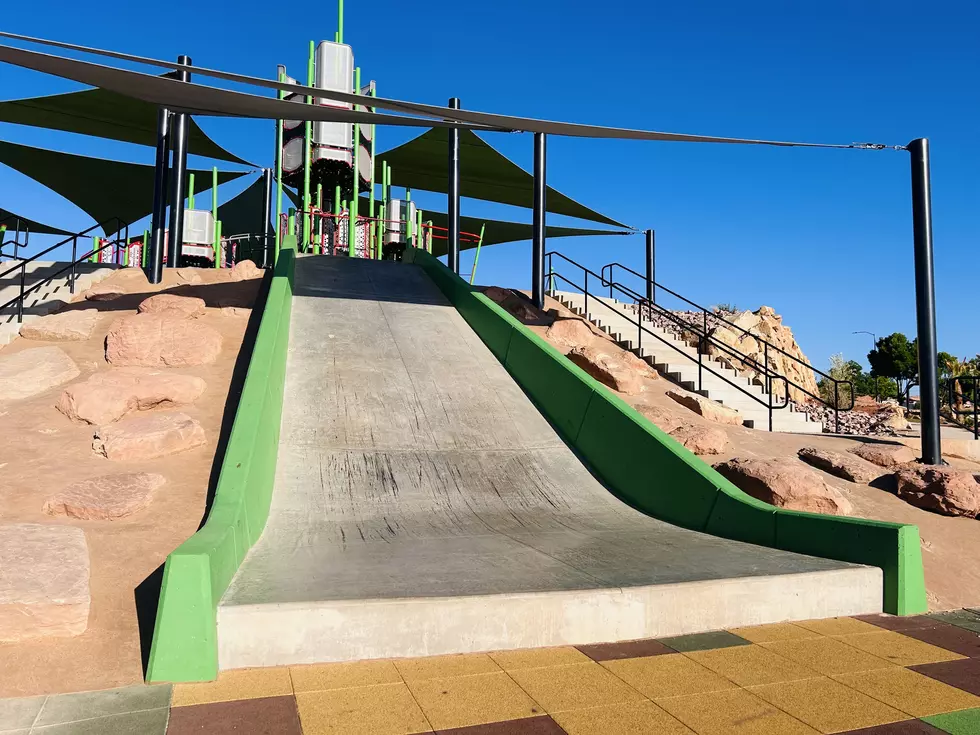
Empowering The Community: Taking A Stand Against Child Abuse In Southern Utah
I love this country and I love Southern Utah.
But sometimes I just don't understand.
Incredible people like Kristy Pike run the Washington County Children's Justice Center, a place where children can be examined and interviewed as a follow-up to horrific crimes that have been committed against them.
Adults with big hearts have stepped up to fund and run this non-profit "safe place" for kids who have been abused, physically or sexually.
The thing I don't understand is how someone -- members of our community -- could abuse a child.
We shouldn't need a place like the CJC because this just shouldn't happen.
I'm not naïve or stupid. I know that it does happen, but it breaks my heart. Being betrayed hurts at all levels, but the pang of betrayal hits hardest when it is delivered by someone you trust, love, rely on.
This April, National Child Abuse Awareness Month, let's do what we can to stop it. Catch the creeps. Nail the bad guys. Save the kids.
Here are some crucial numbers you need to keep somewhere handy. Look for any signs of abuse, then make a call. Don't hesitate. Just do it.
24-hour child abuse hotline: 855-323-3237
Division of Child and Family Services at 877-797-3237
WC Children's Justice Center: 435-301-7190
National Center for Missing & Exploited Children's CyberTipline: 800-843-5678
Learn to recognize the signs of child abuse:
Indicators of physical abuse can include the following:
- Injuries to the eyes or both sides of the head or body (accidental injuries typically affect only one side of the body)
- Frequently appearing injuries such as bruises, cuts, and burns, especially if the child is unable to provide an adequate explanation of the cause. These may appear in distinctive patterns such as grab marks, human bite marks, cigarette burns or impressions of other instruments.
- Destructive, aggressive or disruptive behavior
- Passive, withdrawn or emotionless behavior
- Fear of going home or fear of parent(s)
Indicators of sexual abuse can include the following:
- Symptoms of sexually transmitted diseases
- Injury to genital area
- Difficulty and/or pain when sitting or walking
- Sexually suggestive, inappropriate or promiscuous behavior or verbalization
- Expressing age-inappropriate knowledge of sexual relations
- Sexual victimization of other children
Indicators of maltreatment can include the following:
- Obvious malnourishment, listlessness or fatigue
- Stealing or begging for food
- Lack of personal care – poor personal hygiene, torn and/or dirty clothes
- Untreated need for glasses, dental care or other medical attention
- Frequent absence from or tardiness to school
- Child inappropriately left unattended or without supervision
Please, please! Let's stop this now.

Rising Concern: Fatal Wrong-Way Crashes Grip Utah Commuters
Last year, we had a double-fatality in Southern Utah stemming from a wrong-way driver. Last month a woman was killed when a Utah Highway Patrol officer had to forcibly crash into the woman's vehicle to stop her wrong-way travel.
Last week, four people narrowly escaped serious injury when they had a major collision near the port of entry in Southern Utah after entering the freeway going the wrong direction.
Although wrong-way driving crashes are nowhere near the most common crashes, they are by far the most deadly.
According to the Utah Department of Transportation, 13 percent of all wrong-way crashes end with at least one fatality. That's nearly triple the rate of crashes involving leaving the roadway or impaired driving.
Some people on social media want to blame the freeway engineers.
- "I have never seen a state with so many wrong way crashes. 30 years living near one of the busiest interstates in the country and I never saw a wrong way crash. I think UDOT may want to look at ramp signage in other states. I know where I came from if you looked in your rear view mirror getting off the ramp, you knew if you were going the other way, you were going the wrong way. Those huge do not enter signs in multiple spots on the off ramps were very noticeable along with huge one way arrow signs on the ramps and at the end of the ramp," said one commenter.
- "There has to be a way to stop these people from entering from the wrong way. My suggestion would be to put in spike strips that would pop their tires therefore not allowing them to enter. Sounds harsh, but I would rather see them have to replace tires rather than take innocent lives." Also, see this link for why spike strips aren't used.
- "So predictable. The State of Utah should hang their head in shame on this one. The lack of reflectorized signage, reflectorized road markings, overhead street lighting, and poor highway design all contributed to this horrible wreck. That area is so dark at night you can't see your hand in front of your face. The total lack of concern and planning on the part of UDOT is just plain sinful."
But others have come to the defense of the road makers.
- "Unfortunately changing the roadways won't stop people from driving under the influence." (Note: the driver of the wrong-way crash has not been accused of impaired driving. The investigation will reveal more).
- "No matter what the exit looks and built like you still drive on the same side of the road just like a road in town. And if you are coherent you would know if you were going south north west east."
- "A little research on the subject would show it's on the rise nationwide with Texas and Florida leading with the most wrong way crashes."
To back up that last comment, information from the 2010s tells us that Utah had only 3.3 deaths per year (with 30 crashes) during that time from wrong-way crashes. In contrast, Texas had 67.7 deaths per year with 446 wrong-way crashes and Florida had 34.4 DPY with 226 crashes.
Unfortunately, Utah has already had six wrong-way related fatalities in 2024.
Interestingly, the AAA Foundation said its research showed the odds of being a wrong-way driver increased with 1. alcohol impairment; 2. older age, and 3. driving without a passenger.
Utah is being proactive in trying to stop these type of accidents.
This year, UDOT has installed 15 wrong-way driving detection systems around the state to help prevent wrong-way driving crashes.
UDOT began installing these systems in February 2023, and is in the process of installing eight more.
The new wrong-way driver detection and alert system consists of a detector unit, which includes a radar and high definition/infrared cameras, and a series of red “Wrong Way” warning signs equipped with solar-powered, high-intensity LED lights. When a wrong-way driver is detected by the radar or the cameras, the LED signs activate to alert the driver. If the vehicle continues going the wrong way, the system sends automated alerts to the UDOT Traffic Operations Center (TOC) and the Utah Highway Patrol (UHP) so the driver can be tracked and stopped as quickly as possible.
So what should you do if you encounter a wrong-way driver?
UHP Sgt. Cameron Roden told the Deseret News that if you see a wrong-way driver that you slow down as much as possible. “A lot of these crashes we are seeing happen toward the left-hand side of the road,” he said. “And so, if you see a wrong-way vehicle coming and can maneuver to the right, get over to the right and stop.”
“Each situation is so unique and independent,” Roden emphasized. “Some of these crashes are very violent and sudden.” Drivers sometimes do not have enough time to react due to this.

Distracted Driving Awareness Month: Don't Let a Text End Your Life
April is Distracted Driving Awareness month, which is more relevant to Southern Utah than one might think.
According to the St. George Police Department, distracted driving is what causes the most crashes in Southern Utah, and that goes for a good chunk of the United States as well.
In an article from AAA Living, various statistics show the danger distracted driving poses to anyone willing to look away from the road while behind the wheel.
The article uses information from the National Highway Traffic Safety Administration to show how fast a distracted driver can their lives away.
The article said, “According to the National Highway Traffic Safety Administration (NHTSA), five distracted seconds at the speed of 55 mph is the same as driving the entire length of a football field with your eyes closed.”
Distracted driving isn’t just texting and driving, it’s anything that takes your eyes off the road while you're actively controlling the vehicle. You could be eating, getting a bit too into the music you're listening to, turning your head to talk to your passengers, and even fiddling with the radio can be interpreted as distracted driving.
The article said, “According to statistics from the NHTSA, nine people are killed and more than 1,000 are injured daily from distraction-related crashes in the United States. The NHTSA estimates that distracted driving killed 3,522 people in 2021, which is the most recent data available. These sobering statistics serve as a reminder that we can all do better at keeping our eyes on the road.”
New information from the NHTSA stated 3,308 people lost their lives in 2022 as a result from distracted driving. While that is less than 2021’s numbers, that’s 3,308 too many.
If you are out on the road and feel there is something other than driving that requires your attention, please pull over and find a safe place to accomplish your task before continuing. Your life is far too precious to end over something as superfluous as a text.
Tips To Stay Safe During An Earthquake In New York
How The Total Solar Eclipse Will Affect Your Zodiac Sign
Gallery Credit: Lizzy Snyder
More From KDXU 890 & 92.5









